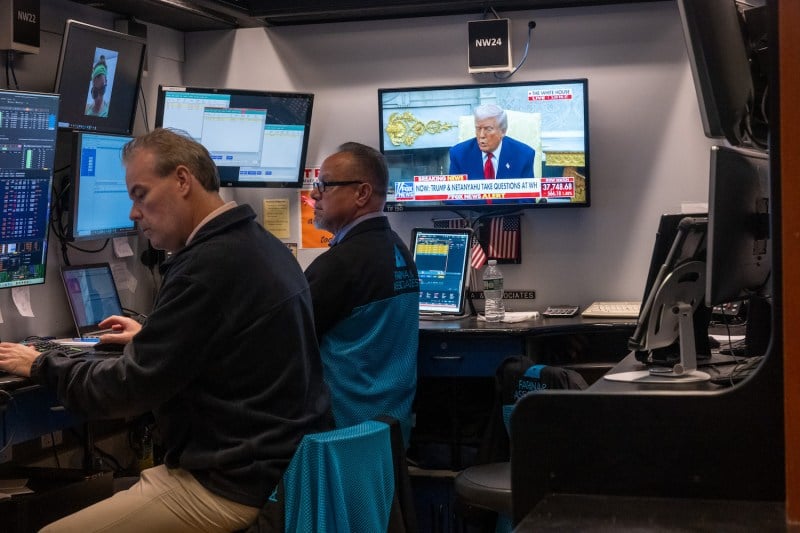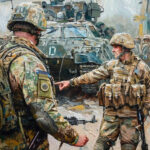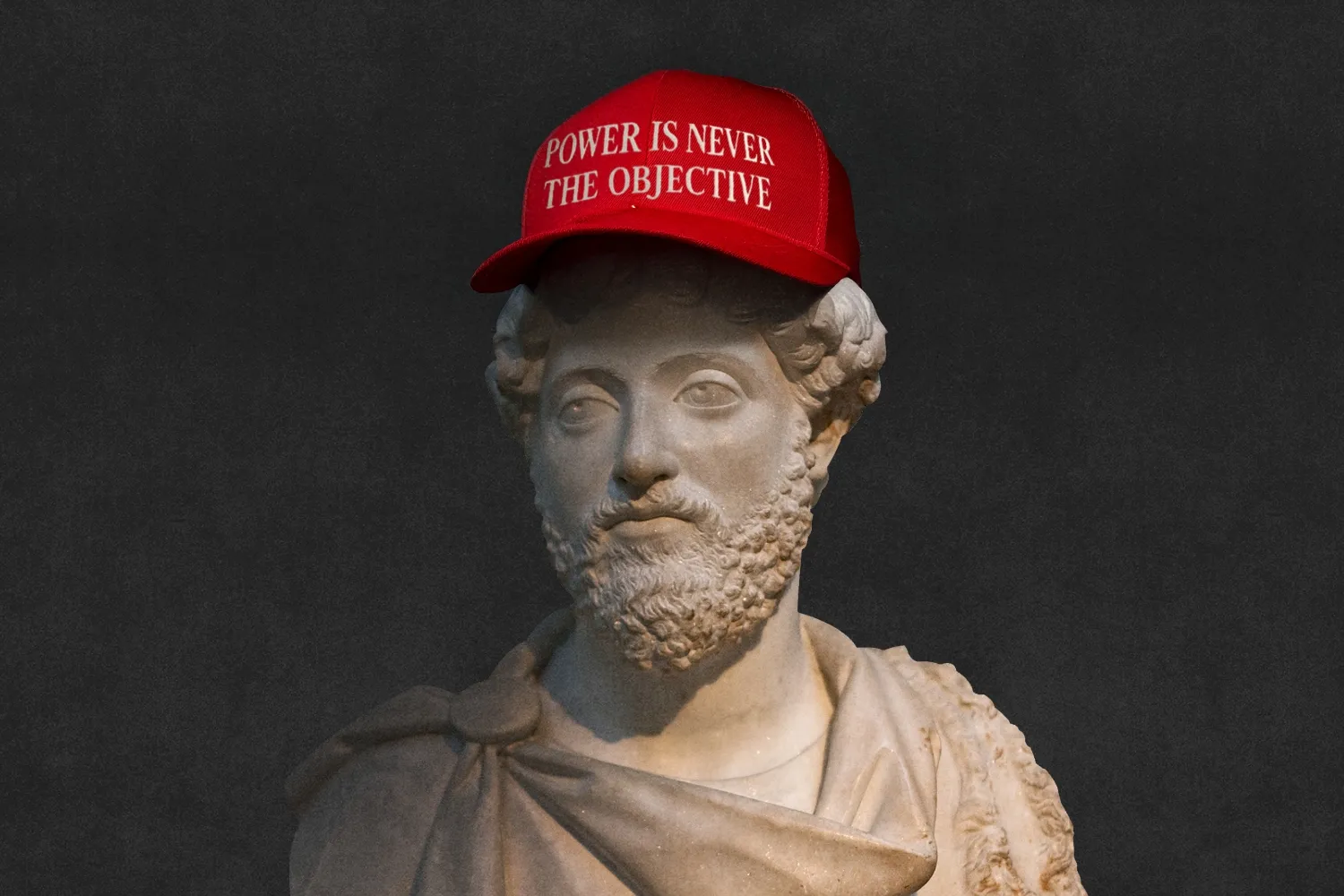Trump’s Trade Policies Keep Undercutting His Own Goals

Trump’s Trade Policies Keep Undercutting His Own Goals
Trump’s tariffs are set to make reshoring harder and trade deficits bigger.
U.S. President Donald Trump is displayed on a television screen as traders work on the floor of the New York Stock Exchange in New York City on April 7. Spencer Platt/Getty Images
In the annals of overestimating one’s trade leverage and then inflicting own-goals, the Confederacy’s 1861 embargo on the exports of its one product—cotton—in the hopes of coercing foreign countries into supporting the nascent nation always held pride of place. Until this spring.
The United States, thanks to President Donald Trump’s trade wars, has already managed something similar, provoking widespread boycotts of U.S. goods in Canada and Europe, closing off some of the main export markets for U.S. farm goods, and, most recently, shutting the door for Boeing on one of the world’s fastest-growing aviation markets, China.
In the annals of overestimating one’s trade leverage and then inflicting own-goals, the Confederacy’s 1861 embargo on the exports of its one product—cotton—in the hopes of coercing foreign countries into supporting the nascent nation always held pride of place. Until this spring.
The United States, thanks to President Donald Trump’s trade wars, has already managed something similar, provoking widespread boycotts of U.S. goods in Canada and Europe, closing off some of the main export markets for U.S. farm goods, and, most recently, shutting the door for Boeing on one of the world’s fastest-growing aviation markets, China.
Beyond the inherent contradictions that underlie the ever-shifting rationales for Trump’s tariff policies—negotiated truces will lower tariffs, which will lower tariff revenues and undercut any reshoring of manufacturing, while permanent high tariffs make negotiations pointless—there is more to come, starting with the continued use of national security justifications to build bigger protectionist walls.
Trump already leaned on so-called Section 232 investigations to hike duties on steel and aluminum in his first term, and again in his second. He has also invoked national security to shield U.S. automakers from such threats as Canadian transmissions. He has announced Section 232 investigations into copper (a cornerstone of modern buildings and power systems) as well as timber and lumber, which are critical components in housing and construction. Given that the cost of housing remains a major public concern, that could backfire.
Trump has announced Section 232 investigations into semiconductors and the equipment used to make them, with tariffs expected to follow. The White House’s stated goal is to bring manufacturing back to the United States. Yet tariffs on these items would result in higher prices on exactly the things that would make it easier for the United States to reclaim a bigger share of the chipmaking industry and the cutting-edge technologies they power.
Add to that list pharmaceuticals, many of which are made abroad. Trump wants more of them to be made in the United States, but adding to the cost of medicines for the most expensive health care system in the developed world runs counter to the goal of assuaging public concerns about prices and health care. While the tariffs may be meant to incentivize reshoring of pharmaceutical manufacturing capacity, experts say it would take years, if even then, to replicate the kind of medicine fabrication infrastructure already present among major U.S. trading partners.
Most recently, Trump announced a Section 232 investigation into critical mineral dependency, including rare earths—after China already cut off the United States from most of the supply of such minerals due to the ongoing trade war. Such investigations are usually a prelude to tariffs that would make them costlier to import, if the sellers were even still selling them. Building a mine-to-magnet supply chain that has been a goal of successive U.S. administrations is not something that can be accomplished with the flick of a switch, but the higher costs or sheer unavailability will hammer important industries such as autos, clean technology, and defense in the meantime.
But there’s more. The Trump administration’s latest rationale for the April 9 pause on the so-called reciprocal tariffs on nearly the entire world is to give countries a chance to cut commercial ties with China, including limiting imports and transshipment of goods from China and limiting Chinese investment in their countries. In exchange for cutting ties with the world’s second-largest economy, and in many cases their main trading partner, those countries may receive concessions on some very high U.S. tariffs but would probably still be subjected to the 10 percent baseline tariff now in place.
As Dan Drezner, a professor of international politics at the Fletcher School of Law and Diplomacy at Tufts University, points out, assembling a coalition of like-minded countries to cut trade deals among themselves, sideline China, and force it to modify its predatory trade behavior was the idea behind former President Barack Obama’s Trans-Pacific Partnership, which Trump jettisoned his first week in office during his first term.
What’s more, if the Trump administration’s plans to reach bilateral trade deals with between 70 and 90 countries in less than 90 days bear fruit—and seasoned trade negotiators are skeptical of that timeline—then the relative tariff differences between China and the rest of the world will be massive.
What that means in practice, as Oxford Economics said in a report this week, is that those countries that compete head-to-head with China in nearly a score of major product categories will have a huge trade advantage selling into the U.S. market. (Case in point: Shipping rates from Vietnam, which until the summer is spared a punishing 46 percent U.S. tariff, are skyrocketing as the United States scrambles to import even more goods from what is still a low-cost country.)
“There are strong incentives for Asian economies to export more to the U.S. given that China may be forced to vacate many U.S. import markets,” Oxford Economics said in a note. “That would increase these economies’ trade surpluses with the U.S.”
But it’s not just emerging economies that stand to win as Trump’s trade war zeroes in on China. “Among advanced economies, Singapore, Italy, Japan, South Korea, and Germany are the biggest winners,” Oxford said. Those were precisely some of the countries that Trump singled out for having maintained trade imbalances with the United States before they got a relative leg up thanks to his own inconstant trade policies.
For all the complaints from economists, businesses, traders, markets, and consumers that Trump’s trade policies are incoherent, they have so far been coherent in one way: They are coherently achieving the opposite of what they were meant to achieve.
This post is part of FP’s ongoing coverage of the Trump administration. Follow along here.
Keith Johnson is a reporter at Foreign Policy covering geoeconomics and energy. X: @KFJ_FP
More from Foreign Policy
-

U.S. President Donald Trump gives a thumbs-up upon arrival at Joint Base Andrews in Maryland after spending the weekend at Mar-a-Lago. How to Ruin a Country
A step-by-step guide to Donald Trump’s destruction of U.S. foreign policy.
-

Chinese President Xi Jinping arrives for a meeting with Vietnamese National Assembly Chairman Tran Thanh Man in Hanoi on April 14. Why Beijing Is Standing Up to Trump
Chinese leaders have their pride, too.
-

Russian soldiers practice marching Why Don’t Russian Soldiers Revolt?
Astonishing death rates and brutal abuse have not kept troops from following orders.
-

An illustration shows a police officer trying to sudue a panicked mob of men. The Awful History of Tariffs and Depressions
What the 19th century teaches us about what happens next.











Join the Conversation
Commenting on this and other recent articles is just one benefit of a Foreign Policy subscription.
Already a subscriber?
.
Subscribe
Subscribe
View Comments
Join the Conversation
Join the conversation on this and other recent Foreign Policy articles when you subscribe now.
Subscribe
Subscribe
Not your account?
View Comments
Join the Conversation
Please follow our comment guidelines, stay on topic, and be civil, courteous, and respectful of others’ beliefs.
Change your username |
Log out
Change your username:
CANCEL
Confirm your username to get started.
The default username below has been generated using the first name and last initial on your FP subscriber account. Usernames may be updated at any time and must not contain inappropriate or offensive language.